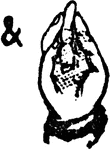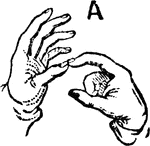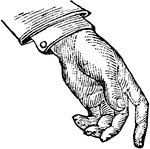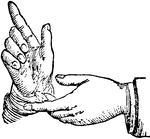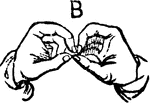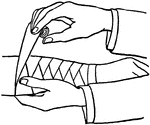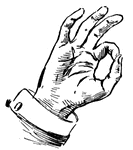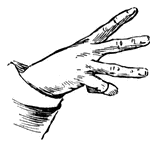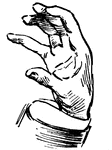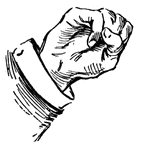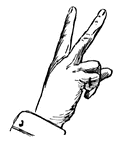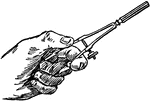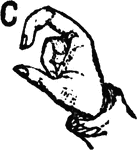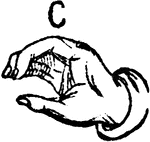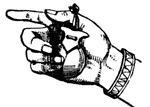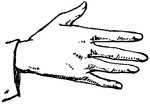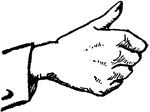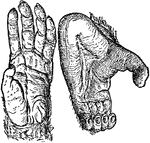
Advantage Rebus
"A bird in the hand is worth two in the bush." Its better to have a small advantage rather than a greater…
Veins of the Arm and Shoulder
Veins of the upper extremity . Labels: 1, axillary artery; 2, axillary veins; 3, 4, basilic; 5, point…

Arteries of the Hand and Forearm
Arteries of the palm of the head and front of the forearm. Labels: 3, deep part of the raised pronator…
Wing of Bird
"Shows how the bones of the arm (a), forearm (b), and hand (c), are twisted, and form a conical screw."—Pettigrew,…

Block Shears
"Block shears act with additional leverage, and can consequently be used for rather thicker metal, the…

Bolt mechanism dismounting
"Place the cutoff at the center notch; cock the arm and turn the safety lock to a vertical position,…

Bones of the Shoulder and Upper Extremity - Front View
"A, acromion; C, coracoid; CA, carpus; CL, clavicle; H, humerus; M, metacarpals; O, ventral surface…

Cestus
"The cestus used in later times, in the public games, was a most formidable weapon. It was frequently…

Code of English Sounds
Chart illustrating 45 hand positions representing sounds in the English language as described in the…
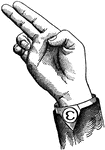
Non-Vocal Divided Back Consonant
Consonants have a closed or narrowly expanded adjustment of the vocal organs, so that in their production…

Non-Vocal Divided Lip Consonant
Consonants have a closed or narrowly expanded adjustment of the vocal organs, so that in their production…

Non-Vocal Divided Point Consonant
Consonants have a closed or narrowly expanded adjustment of the vocal organs, so that in their production…
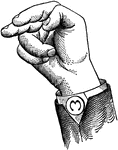
Non-Vocal Divided Top Consonant
Consonants have a closed or narrowly expanded adjustment of the vocal organs, so that in their production…
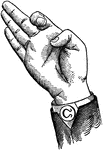
Non-Vocal Mixed Back Consonant
Consonants have a closed or narrowly expanded adjustment of the vocal organs, so that in their production…
